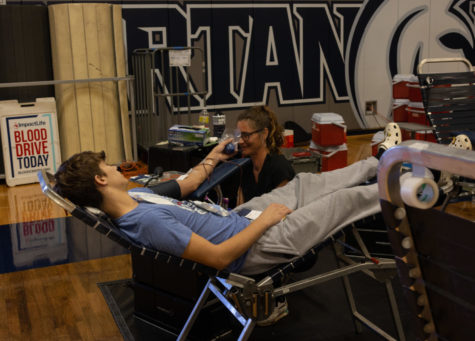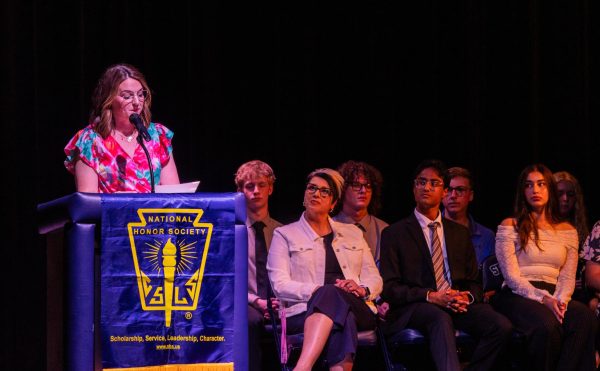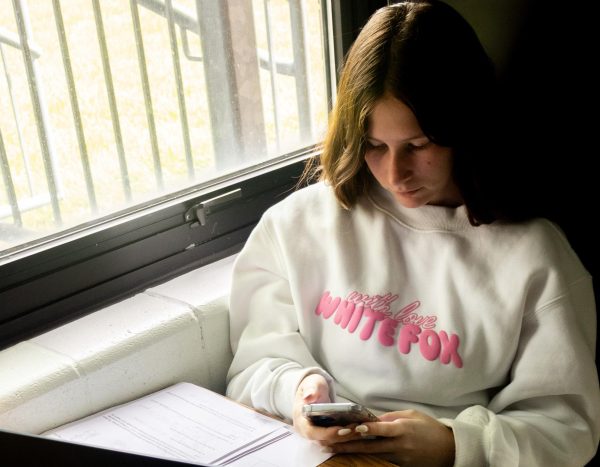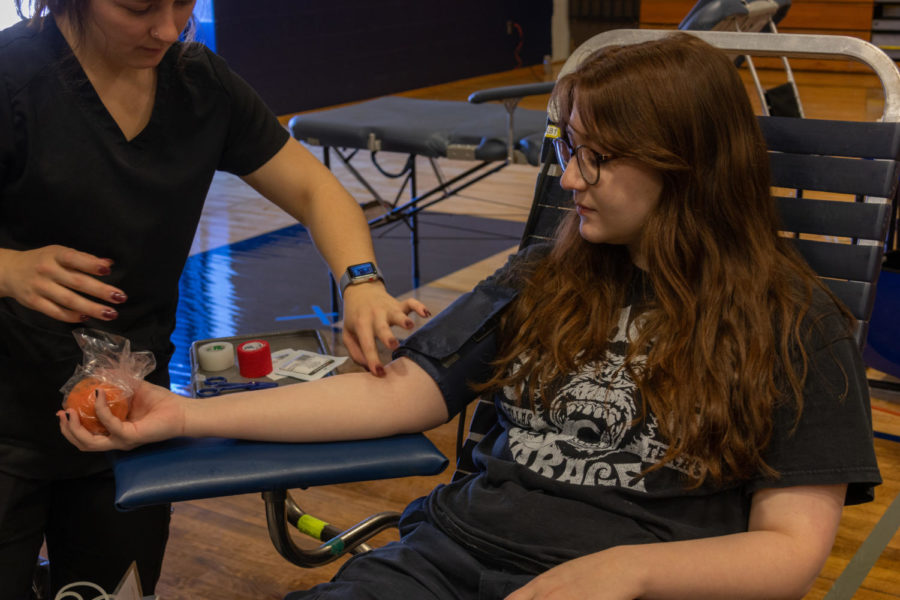Desirable Donations
FHC hosts its annual blood drive event for ImpactLife blood drive services.
Waiting in a donation chair in the large gym, Molly McGraw donates blood for ImpactLife blood drive.
For some people, a pint of blood is just that, a pint of blood, for others, it’s the difference between life and death. According to the American Red Cross Association, a single victim from a car accident can need up to 100 pints of blood just to save his or her life. On Nov. 10, Student Council hosted its annual blood drive where students over the age of 16 were able to give back to those in need. By the end of the day, the school was able to donate a total of 55 pints of blood. Student Council president Lizy Lopez was thrilled with the outcome of this year’s event.
“I think the blood drive went really well. It was very successful, we had little to none “no shows” and many students and staff could donate blood this year,” said Lopez. “My favorite part is how students can get together and join forces for one cause. They are willing to donate blood to help those in need. It’s something really cool to me.”
Over the last eight years, FHC has used ImpactLife, a service that provides blood to hospitals that need it most. Every year, ImpactLife teams up with thousands of blood donors and volunteers donating to more than 120 hospitals in Missouri, Iowa, Wisconsin, and Illinois with a mission to “provide world-class blood products and services to communities in need” in a way that is safe for their donors. Participant Molly McGraw signed up hoping she would be able to donate.

“I did a quiz beforehand and made sure I was well hydrated and that my iron levels were okay and they were,” said McGraw. “I had felt that if I could donate, then there was no harm in doing so I just did it because I could.”
Unfortunately, not all students who signed up were able to donate due to blood donation requirements. With requirements of weight, age, and current medical issues, many students found out they were ineligible after signing up. Nurses were able to check the student donors’ medical status through a finger-prick blood test before the students donated. After the test, sign-up student Hailey Bennett was disappointed to hear she wouldn’t be able to donate this year.
“I didn’t know I had low iron levels but because of it, the nurse said I couldn’t donate. I wish I could have donated blood but I get why I couldn’t. If I wasn’t a senior I would probably try to do it again next year,” said Bennett.
Your donation will support the student journalists of Francis Howell Central High School. Your contribution will allow us to purchase equipment and cover our annual website hosting costs. FHCToday.com and our subsequent publications are dedicated to the students by the students. We hope you consider donating to allow us to continue our mission of a connected and well-informed student body.






